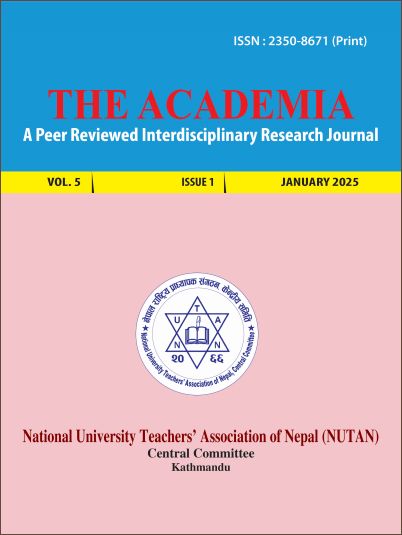The Impact of Political Instability on Democratic Development in Nepal (2022–2024)
DOI:
https://doi.org/10.3126/ta.v5i1.77184Keywords:
Constitutional ambiguities, Corruption, External pressure, Geopolitical tensions, Intra-party conflictsAbstract
This paper analyzes the reasons that led to a change of government in Nepal every few months between 2022 and 2024. This illustrates that the instability boils down to interconnected external and internal factors. This identifies internal factors such as party fragmentation, weak coalition governments, intra-party disputes, constitutional ambiguities, and socioeconomic grievances on corrupt regimes. The geopolitical pressure from India and China is undoubtedly among the external factors, but the growing pressures of our international donors and financial institutions are not distant abandonments. This issue is within the above theme through a qualitative case study of all three coalition governments that collapsed during this period. This data was extracted by closely reading government documents, political party manifestos, and media and academic literature. These results highlight the governance challenges in a politically fragmented environment characterized by weak institutions and international coercive pressures. The research concluded that such instability can only be counteracted by wide-ranging political reforms aimed at constructing democratic institutions, enhancing transparency and accountability, and mitigating intolerance developments through reducing socio-economic grievances.
Downloads
Downloads
Published
How to Cite
Issue
Section
License
Copyright (c) 2025 National University Teachers' Association of Nepal, Central Committee

This work is licensed under a Creative Commons Attribution-NonCommercial-NoDerivatives 4.0 International License.
This license enables reusers to copy and distribute the material in any medium or format in unadapted form only, for noncommercial purposes only, and only so long as attribution is given to the creator.




